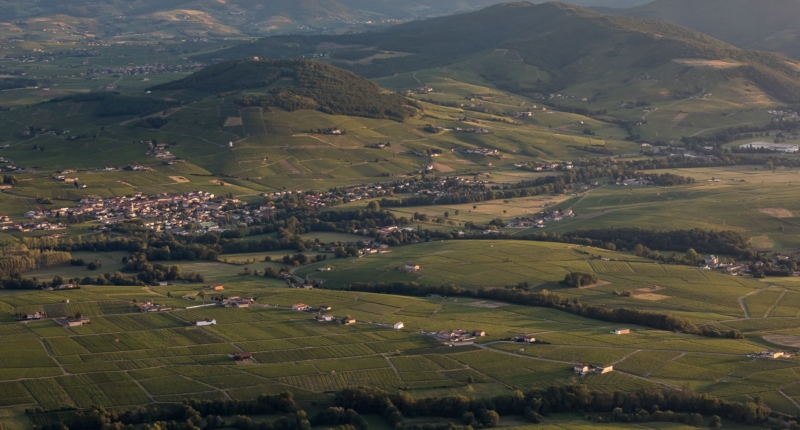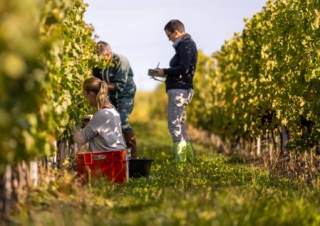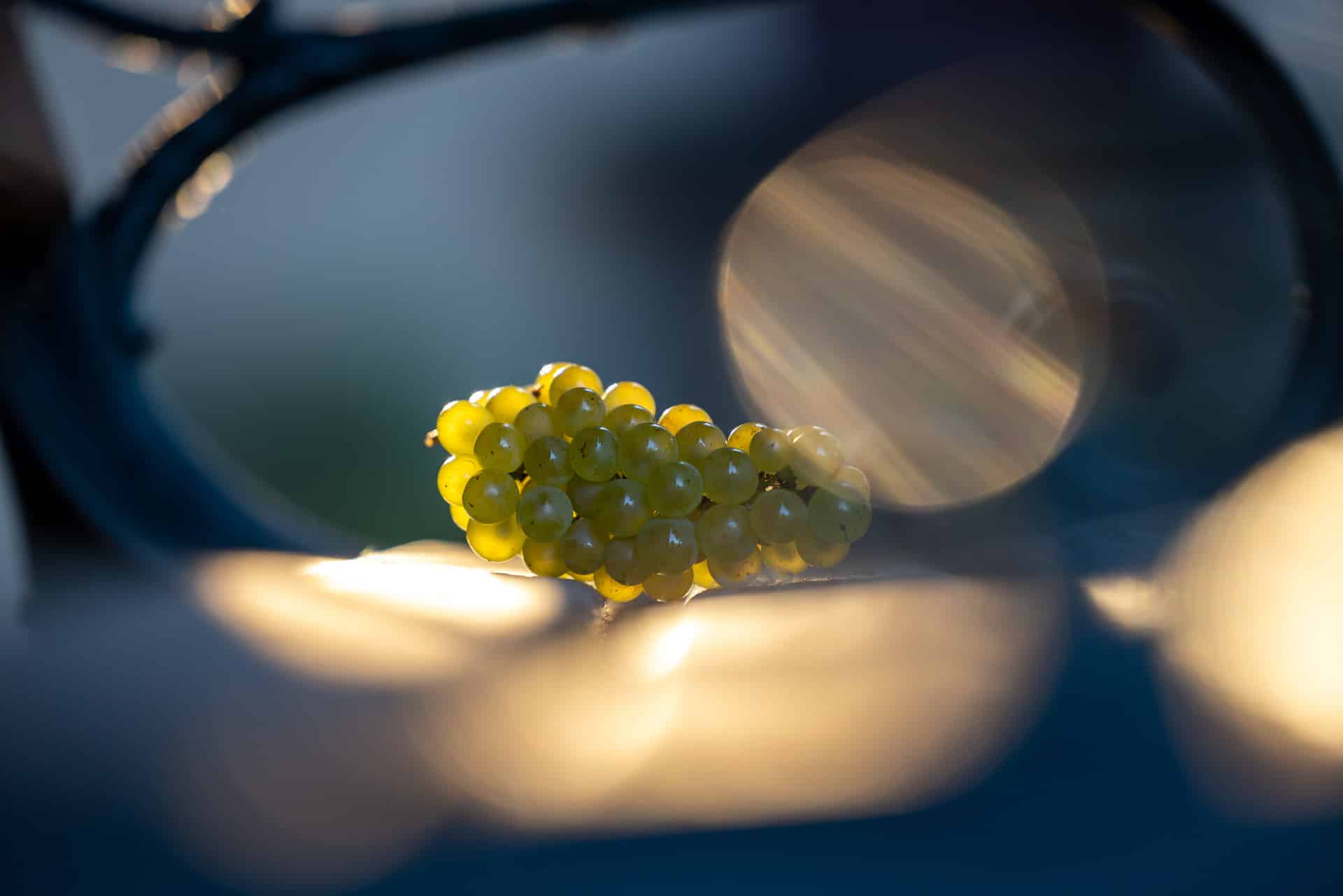A terroir is the combination of natural elements in a particular zone (the soil, topography, biodiversity, climate and landscape) as well as the knowledge and skills of winegrowers and the production techniques used. It is the terroir that gives a wine its particular characteristics. The Beaujolais region is very diverse with a variety of terroirs each with its own secret that can be found in the particular character of each appellation.
Very varied soils from north to south
From 2009 to 2018, at the Inter Beaujolais council’s request, a terroir characterisation survey was conducted by the SIGALES soil mapping agency. After more than 15,000 soil surveys, nearly 1,000 soil pits and 50 field visits, the analyses made it possible to map the Beaujolais vineyard. Winegrowers and négociants are taking advantage of the soil characterisation to highlight the terroirs in plot-by-plot cuvées. In April 2018, recognition of the outstanding geology led to the “UNESCO Global Geopark” designation. Consequently, the Beaujolais vineyard became the 7th Geopark in France. Although the Beaujolais wine region is not very extensive geographically speaking, it encompasses a multitude of different soils in a highly surprising way; over 300 variants have been identified and described. The soils form on bedrock or on the parent material that supports them. As such, our vineyard is quite outstanding, since it bears witness to over 500 million years of geological history for which all the traces can easily be found. At the interface of all the major geological events in history, located on the eastern edge of the Massif Central and impacted by the Alpine phenomenon of the Tertiary period but spared by the glaciers, the Beaujolais wine region has inherited one of the richest and most complex geologies in France. Covering a small area, the vineyard brings together a very wide variety of rocks!
This is where each appellation or if not each “lieu-dit” initially draws its own individual character, especially given that Gamay is the only grape variety used in the Beaujolais region for producing all the red wines: crus, Beaujolais-Villages and Beaujolais.
A climate with different influences
The Beaujolais region benefits from a mild climate marked by three major influences. In winter,
continental air masses contribute to the frosts that can sometimes continue until well into the
spring. Between seasons, the oceanic air masses promote the regulatory function of the Saône River
and reduce the differences in temperature. The return of warm weather brings with it the influence
of Mediterranean winds.
The Upper Beaujolais mountain chain also helps protect the vine stock and attracts the foehn – warm air from the west that has a warming and drying effect in summer when it crosses the Beaujolais mountain ridges on its way down to the plain.
The winegrowing terroir has relatively low rainfall and can be affected by extreme heat as well as sometimes devastating storms.
Slopes with good sunlight
Most of the slopes in the Beaujolais region face south or east and benefit from long hours of sunshine and good light from spring to autumn. Another great advantage for producing exceptional Beaujolais wines.
The passion and skills of winegrowers in the Beaujolais
Growing techniques in the Beaujolais still rely heavily on the physical involvement of the winegrower. Whether it’s for pruning the vine stock, looking after the soil, training the vine or organising the harvest, Beaujolais winegrowers are always physically present on their land. Although mechanical means are used in some places to facilitate certain tasks (ploughing or harvests), the very nature of the land (relatively small plots, stony soils, hillsides, steep gradients, etc.) and the regulations governing the 12 appellations, require constant vigilance and all the skills and knowledge that are passed down from generation to generation.
The Beaujolais region owes the different qualities and variety of its wines to the diversity of its terroirs as much as to the passion of its winegrowers and the intimate knowledge they have built up about their land. Knowledge and skills that are becoming increasingly specialised and very much dedicated to preserving this unique natural heritage.






